This puto recipe is so easy to make and very customizable you can use the same recipe to make puto cheese and a wide variety of other puto flavours. From the traditional putong puti to putong ube to puto with salted eggs. The possibilities are endless.
(Have leftover rice flour from this recipe? You need ¼ cup to make a batch of this delicious buttery shortbread cookies.)
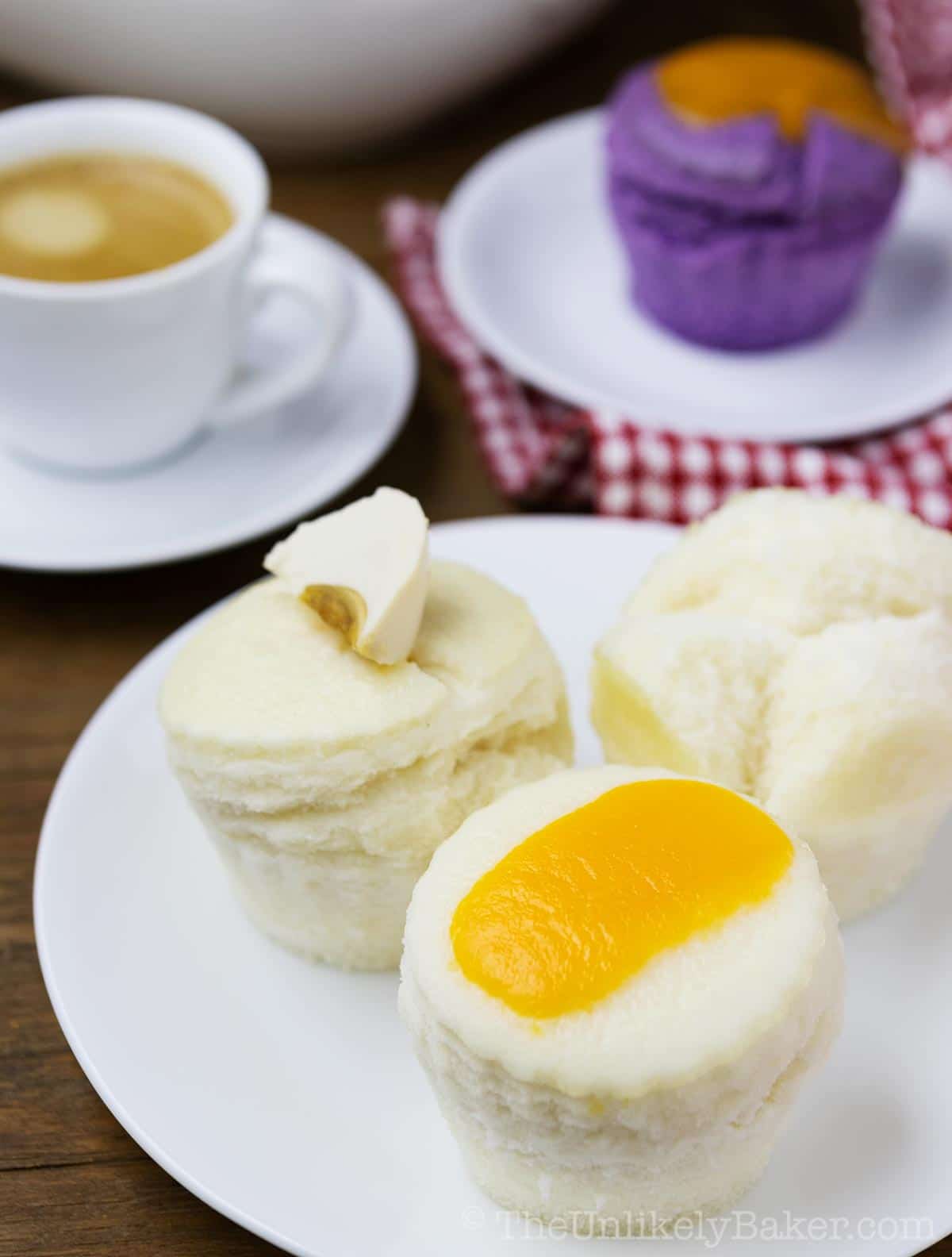
Puto in English is steamed Filipino rice cakes.
They’re popular snacks (or merienda) and also commonly served at parties and gatherings, like birthdays, fiestas, Easter and Christmas.
They’re favourite picnic fare too.
There are different kinds of puto: some are made with coconut milk topped with shredded coconut; some are made with glutinous rice flour; some are stuffed with meat (puto pao).
This puto recipe will teach you how to make simple white rice flour puto or putong puti, which you can then customize however way you want. It’s so easy!
You can top them with cheese for a batch of cheese puto. Or add your favourite extracts like ube or pandan for flavoured puto. You can totally make this recipe your own.
And yes, our Spanish-speaking friends always giggle (or utterly shocked) when we offer them some puto. But they always end up enjoying one (or more) with their coffee lol.
Let’s get to it.
How to make puto

Puto is so easy to make. There are just some key things you need to remember for a successful batch every time. Let’s start with the ingredients.
Ingredients
To make puto, you’ll need:
- Rice flour — it’s important to buy rice flour and not glutinous rice flour (also sometimes called sweet rice flour). It would say so right on the label.
- Evaporated milk — evaporated milk is milk that’s been heated so half of its water content has evaporated away, leaving a thicker, creamier milk. If you want to substitute regular milk, follow the suggestion here.
- Coconut milk — remember to buy coconut milk and not coconut cream
The rest of the ingredients are easy peasy:
- Water
- Granulated sugar
- Baking powder
- Salt
Optional add-ins include:
- Cheddar cheese
- Ube extract (or your favourite flavour, like pandan)
- Salted eggs
Tools you’ll need
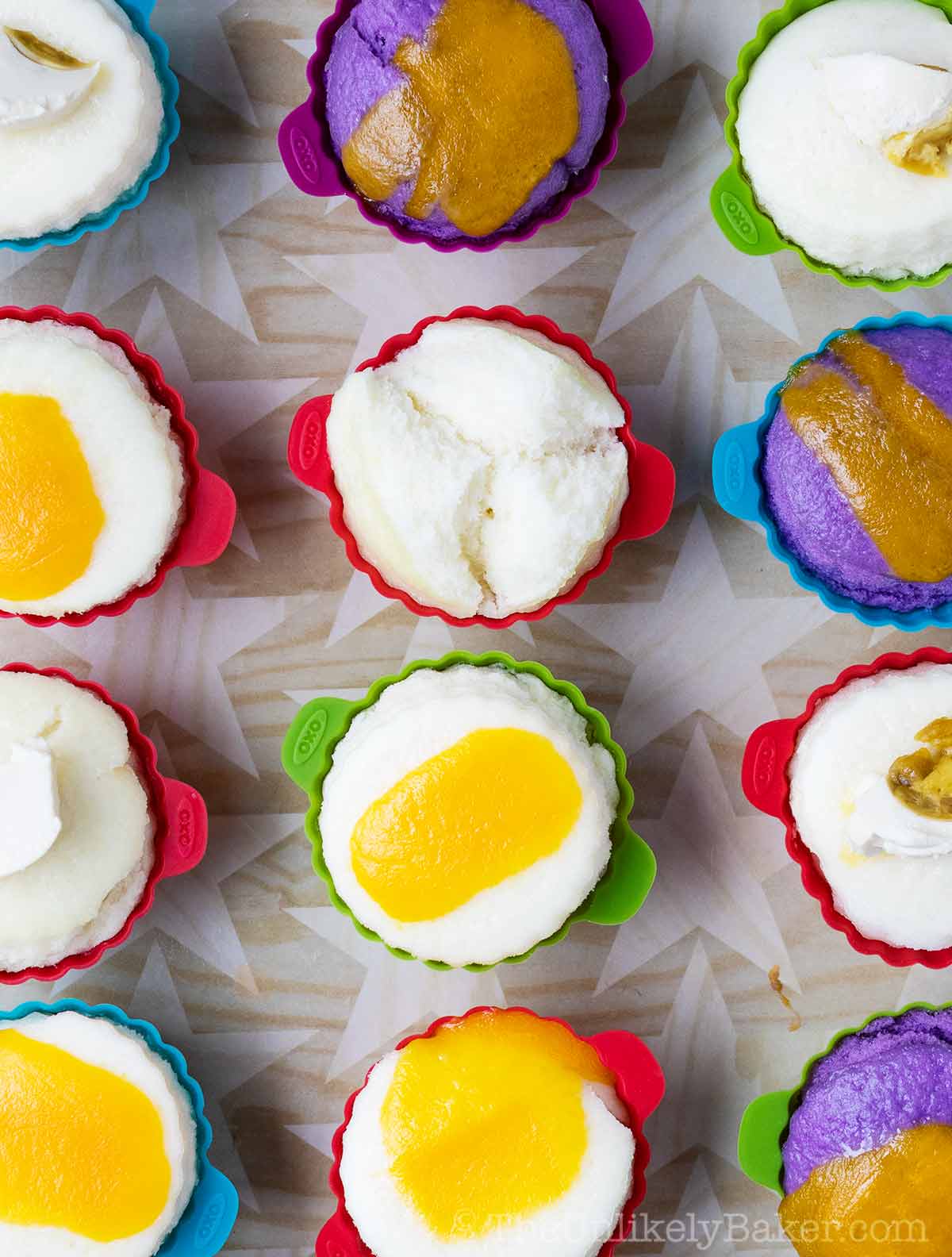
To make puto, you’ll need the usual: mixing bowls, measuring cups, measuring spoons.
You’ll also need:
- A steamer or a steam basket. If you have one of those multi-tiered steamers, best to only use 1 level at a time. I tried using all 3 levels of ours one time and it did not turn out well — some puto were overcooked while others were raw.
- Puto moulds. Traditionally, puto are steamed in aluminum moulds but I find that it’s way easier to use silicone cupcake or muffin cups. The puto just pop right out and they’re easier to clean. These silicone cups are the exact ones I use.
Recipe with step-by-step photos
Now that we have everything we need, let’s make puto!
1 COMBINE. In a large bowl, combine rice flour, evaporated milk, coconut milk and water until incorporated.
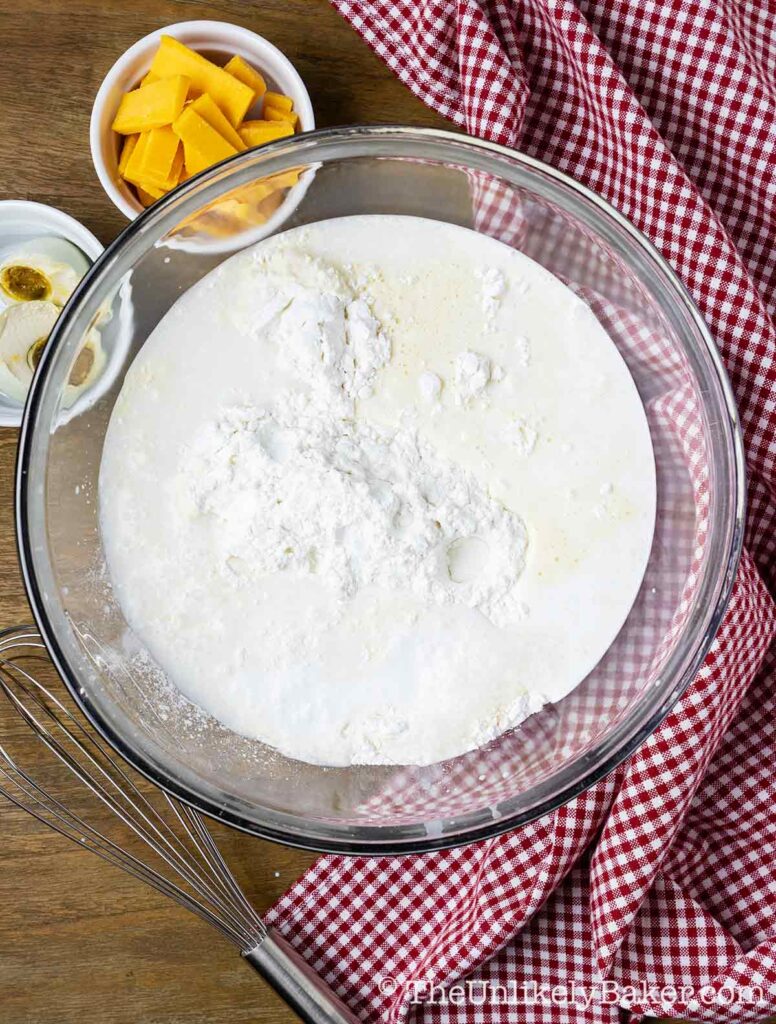
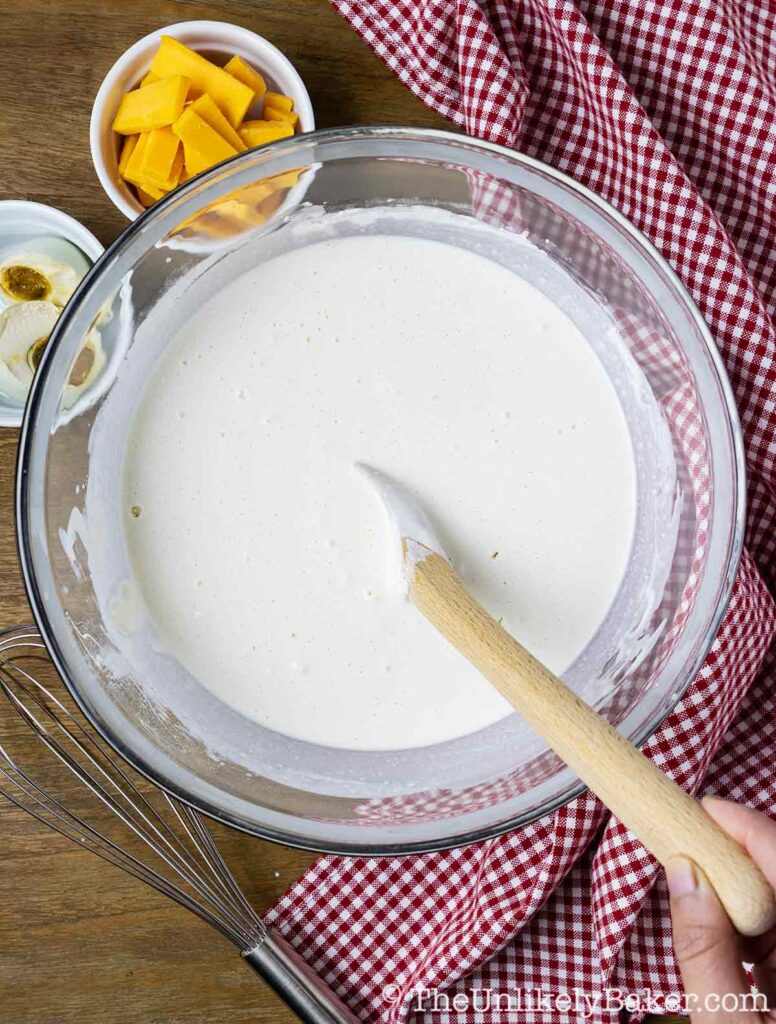
2 CHILL. Cover the bowl with plastic wrap (I personally prefer Press N Seal) and chill overnight. This is a very important step; it allows the rice flour to ferment which results to soft and fluffy puto.
3 DRY INGREDIENTS. When ready, add sugar, baking powder and salt to the mixture and stir to combine. Optional: strain the mixture into another bowl to get rid of lumps and to achieve the smoothest consistency.
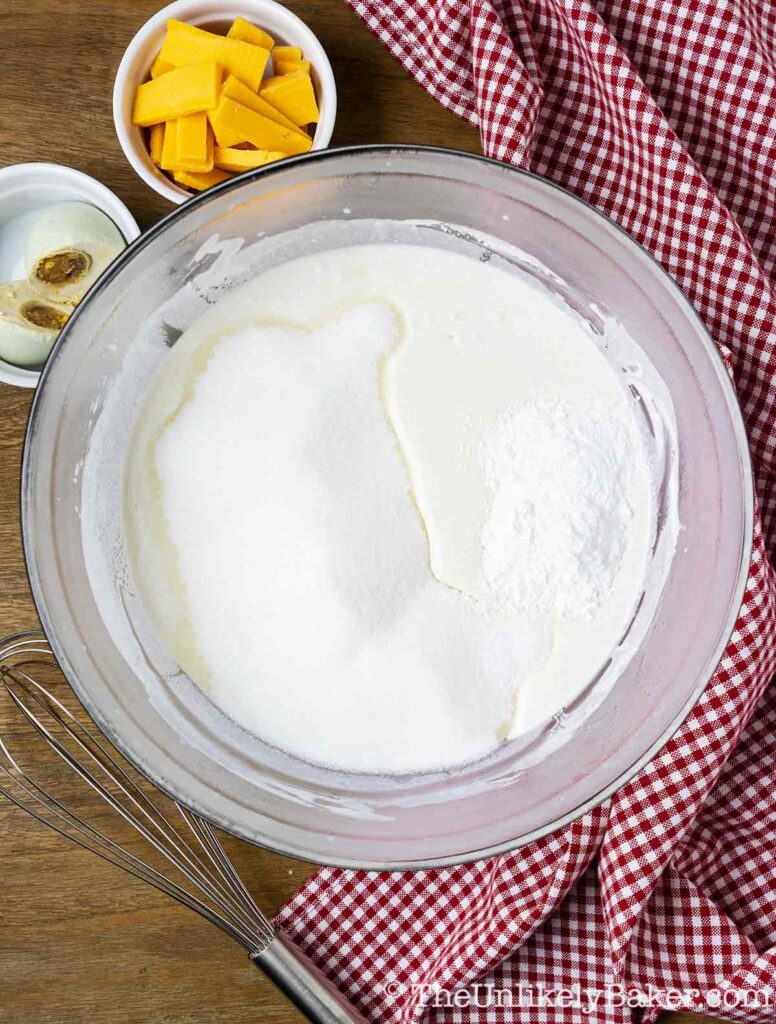
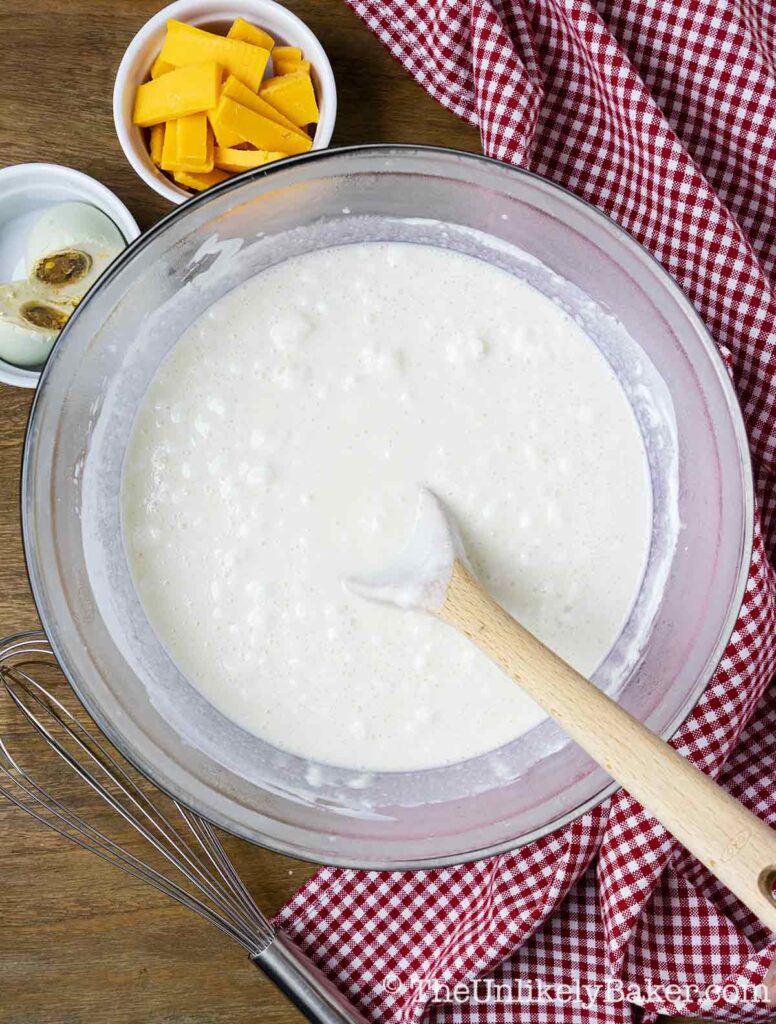
4 POUR. Pour the puto mixture into individual moulds/cups, which have been lightly greased (I use baking spray). Careful not to over-grease your moulds; too much oil will discolour the bottoms of your puto. Also ensure not to over fill the cups; about ¾ full is perfect.
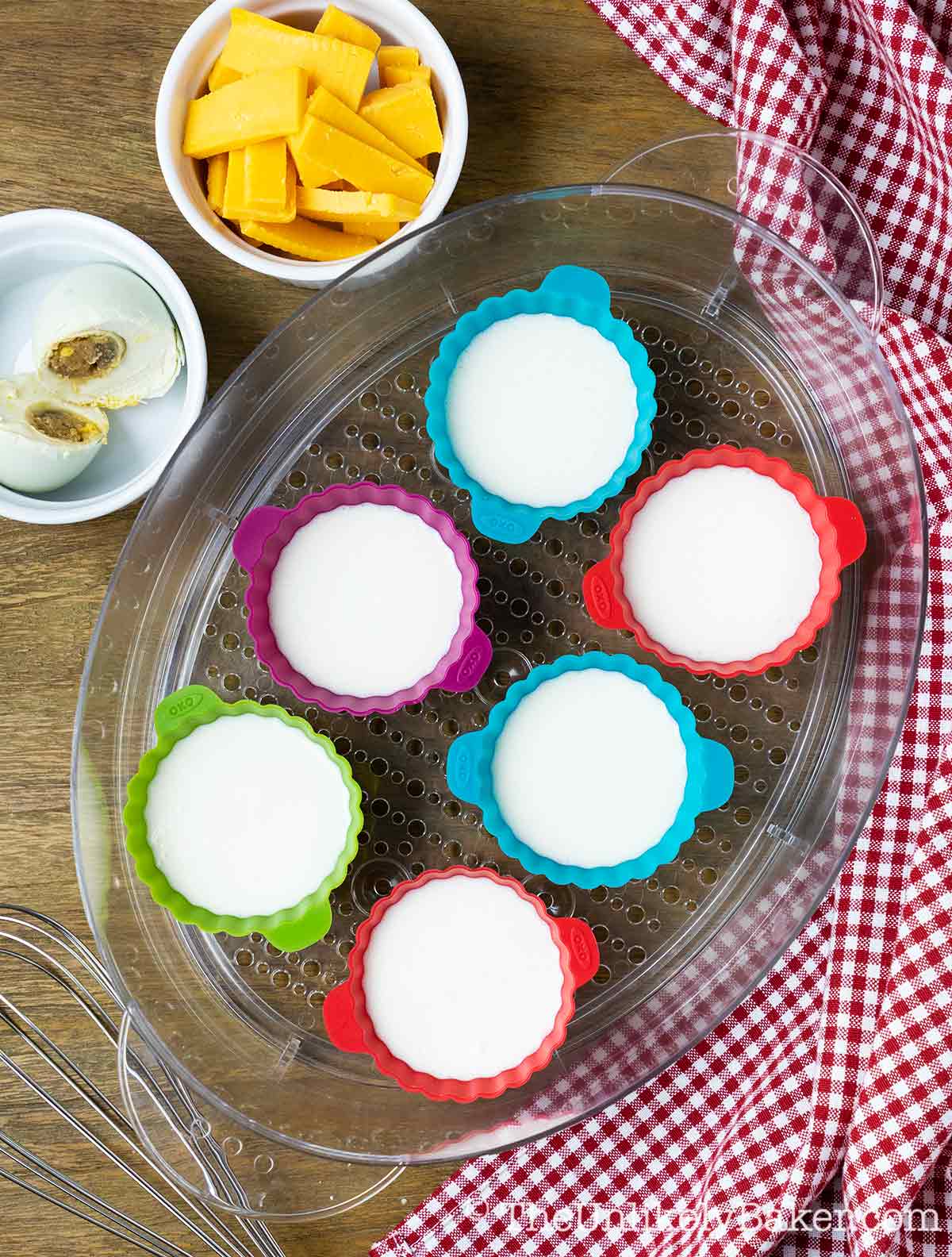
5 STEAM. Steam on med-high heat for 10-15 minutes or until a toothpick inserted in the centre comes out clean.
6 COOL. Remove the puto from the steamer and when they’re still warm but cool enough to handle, remove from moulds and enjoy!
How to customize your puto recipe
As promised, here are ways to make different kinds puto from this single recipe.
How to make cheese puto
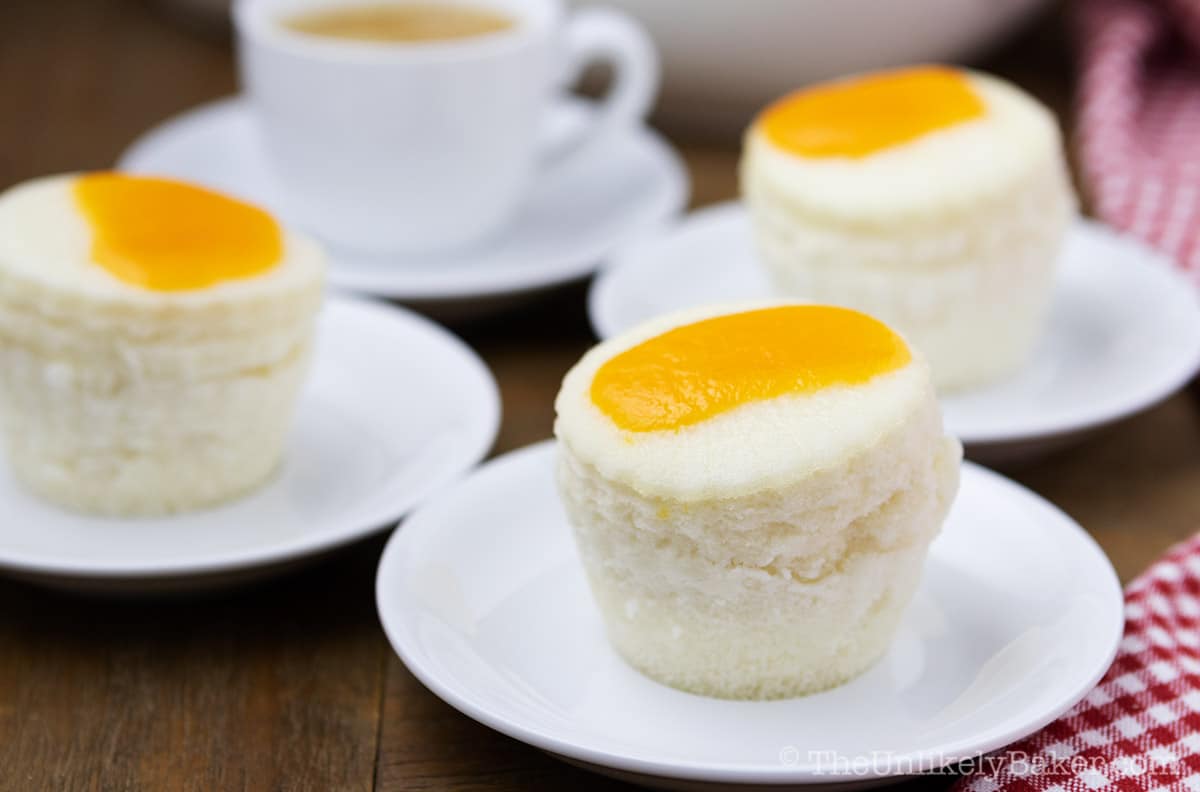
If you want to make cheese puto, all you need to do is place a piece of cheddar cheese on top of the semi-cooked puto. I usually place my cheese around the 10-minute mark. Then continue steaming until fully cooked.
If you want cheese that’s not spread out like the ones in the photos (in Tagalog: kumalat ng bongga):
- Place it later in the steaming process (this means your cheese would just sort of sit on top and not sink in though)
- Choose a harder kind of cheese that won’t spread a lot
- Or simply place a smaller chunk of cheese
How to make ube puto
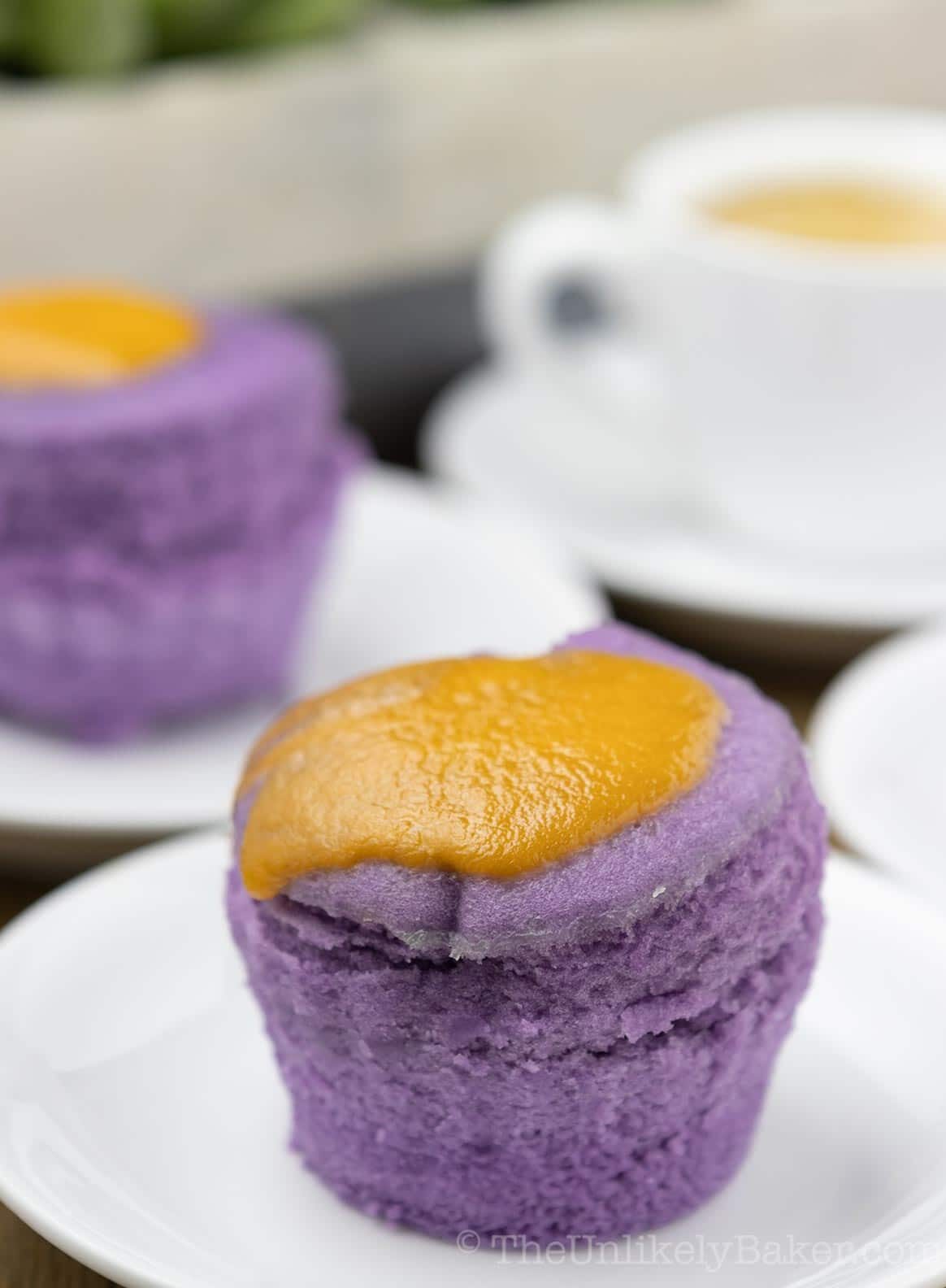
To make putong ube, simply add ube extract to the batter just before you pour into moulds, then stir. That’s it! I usually do 1 tsp of extract for every cup of puto batter.
I sometimes leave it plain, I sometimes put cheese on top. Both works.
You can also make pandan puto this way.
Remember that pandan extract is colourless so if you want your pandan puto to be green, you’ll need to add a bit of green food colour into your mixture.
How to make salted egg puto
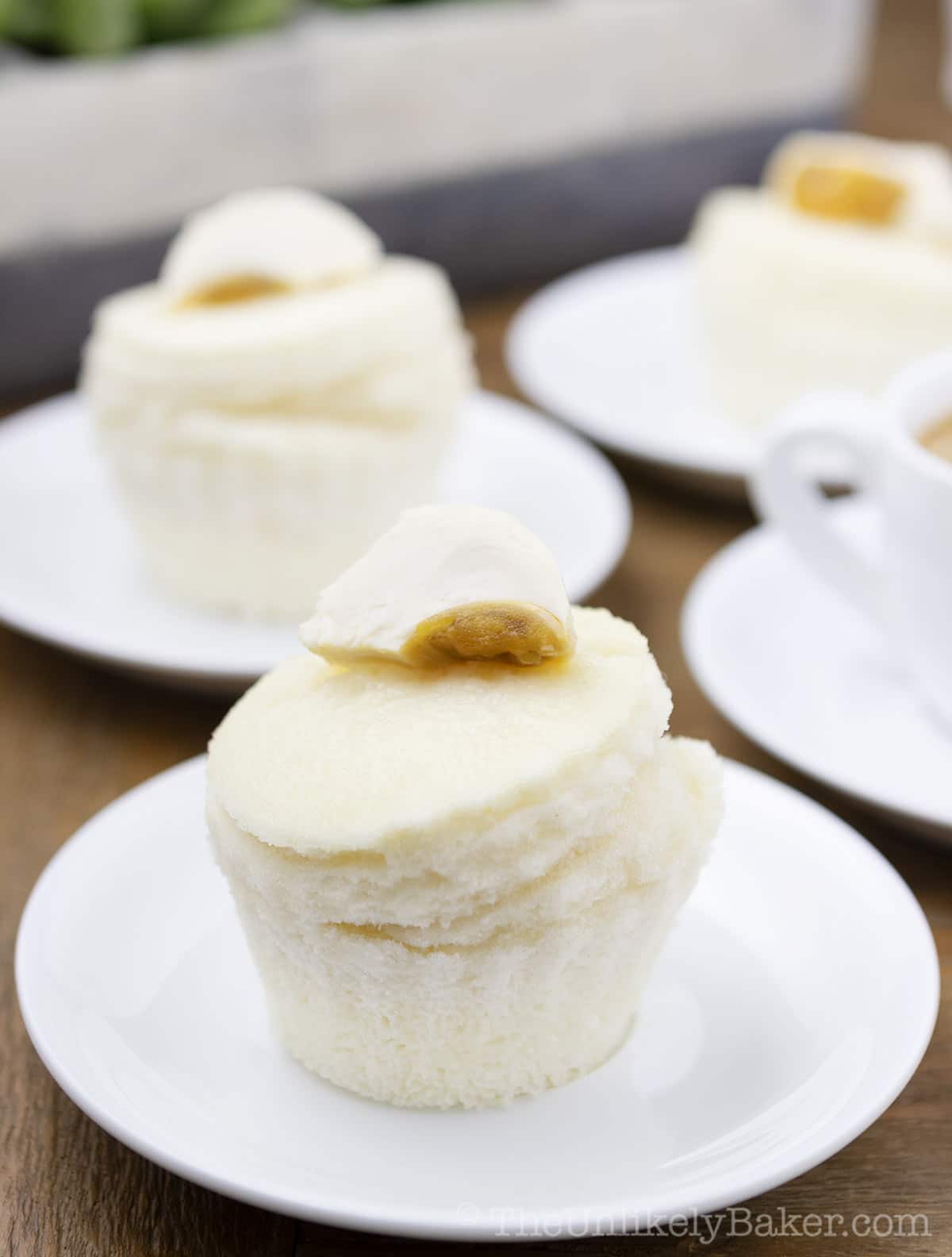
By far, my favourite kind of puto is salted duck egg puto. Sweet and salty! And they couldn’t be simpler to make.
We just buy salted duck eggs, slice, and place on top of puto like how we do with puto cheese.
My salted eggs didn’t really sink into this batch of puto that I photographed, which is fine, but if you want them sinking lower, add them earlier in the steaming process and lightly press them into the puto as you place them on top.
Tips when cooking puto
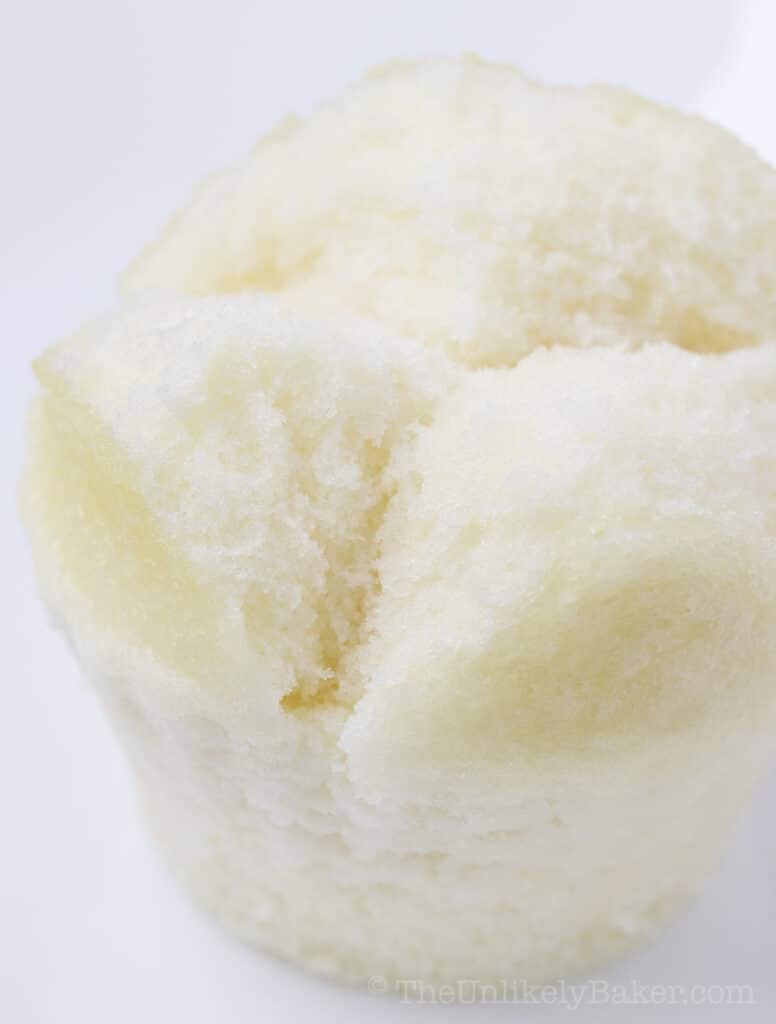
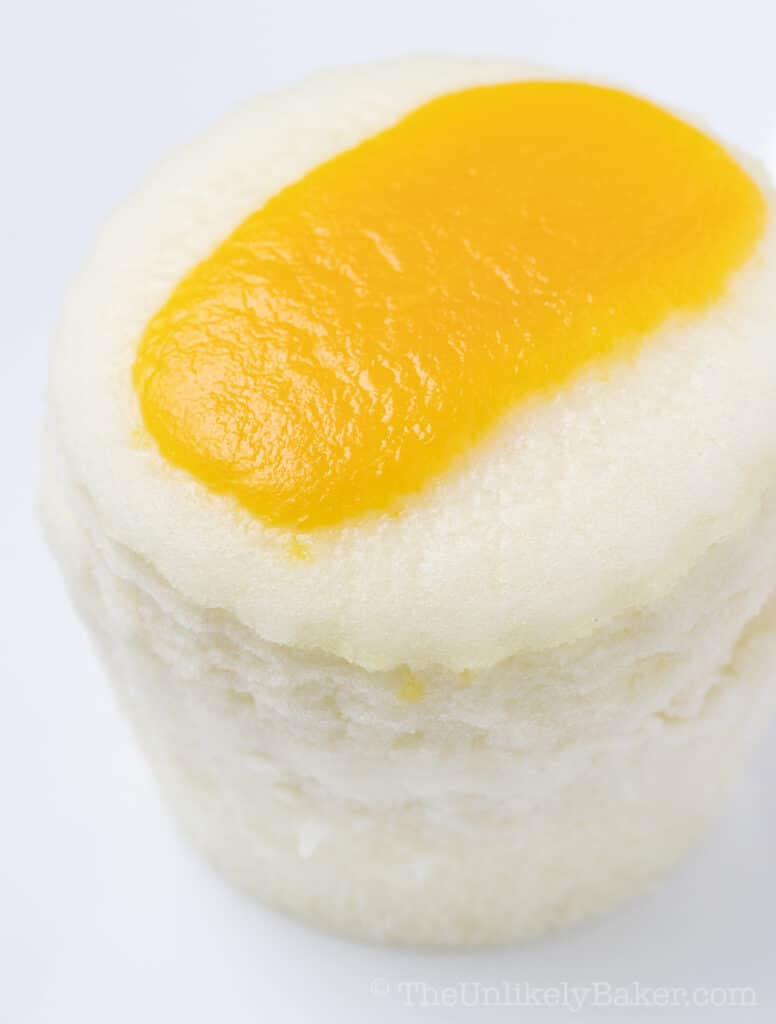
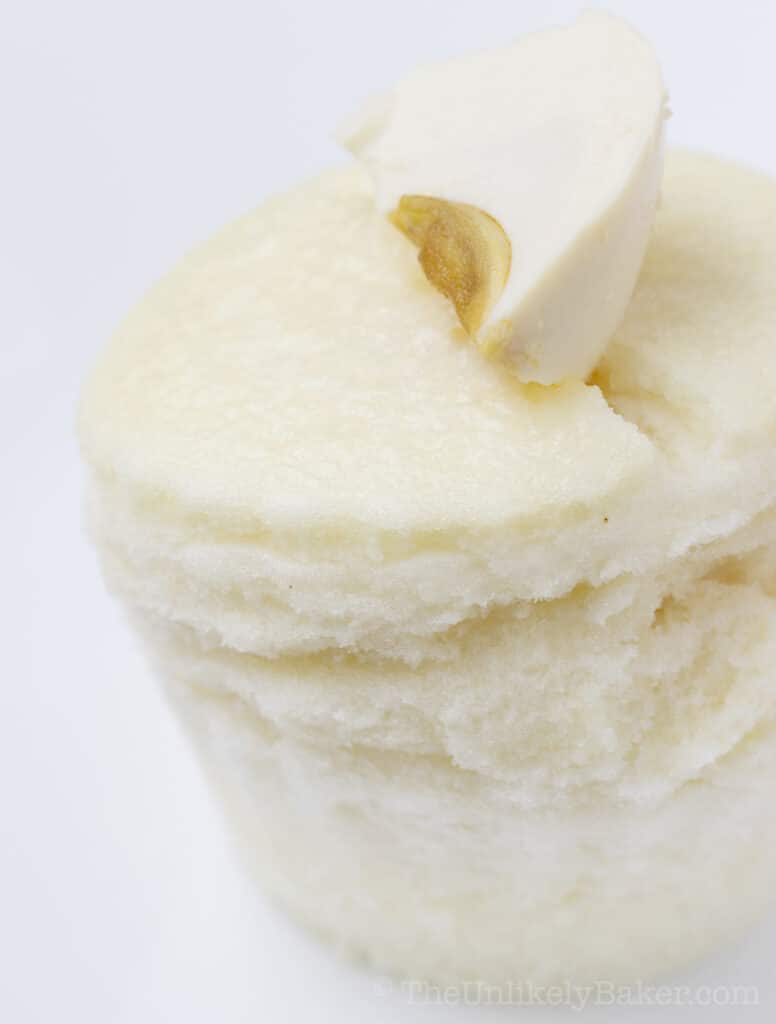
I’ve already mentioned some of these tips above but it’s worth mentioning them again for perfect puto every time.
- Use the right kind of rice flour. It’s really important to buy rice flour and not glutinous rice flour (or sweet rice flour). They’re totally different products so pay attention to the label when buying. You can find rice flour in the baking aisle.
- Don’t skip the overnight chilling. If you’re craving for puto right now, unfortunately you will have to wait until tomorrow. There’s no skipping this step. Chilling is what helps ferment the rice flour for soft and fluffy puto.
- Best kind of tins to use when making puto. Instead of the traditional aluminum moulds, I find that it’s easier to use silicone cupcake or muffin cups. The puto just pop right out and they’re easier to clean.
- How to prevent damp/soaked puto. When steaming your puto, wrap the lid with a tea towel. The tea towel will absorb the moisture and prevent water from dripping into your puto.
- How to store puto. We only leave puto out on the counter for 1 day max. Then we freeze them. They tend to harden beyond repair in the fridge so the freezer is a better option. Just place in a ziploc bag and freeze. They should be good for at least a week.
- Best way to reheat puto. I read that the best way to reheat frozen puto is to steam them again but seriously, who has the time? We just loosely wrap/cover individual pieces with a damp paper towel and microwave for 30 seconds to 1 minute. They’re going to be a tad bit crumblier but still wonderfully soft.
Puto or Filipino steamed rice cakes are so good and go so well with coffee, tsokolate or hot chocolate, or tea.
Perfect for Noche Buena (Christmas Eve), New Year’s, or just your every day merienda reward at the end of a long day. Enjoy!
Other easy delicious Filipino merienda recipes
Speaking of merienda, try these other delicious Filipino merienda recipes that’s sure to make everyone happy.
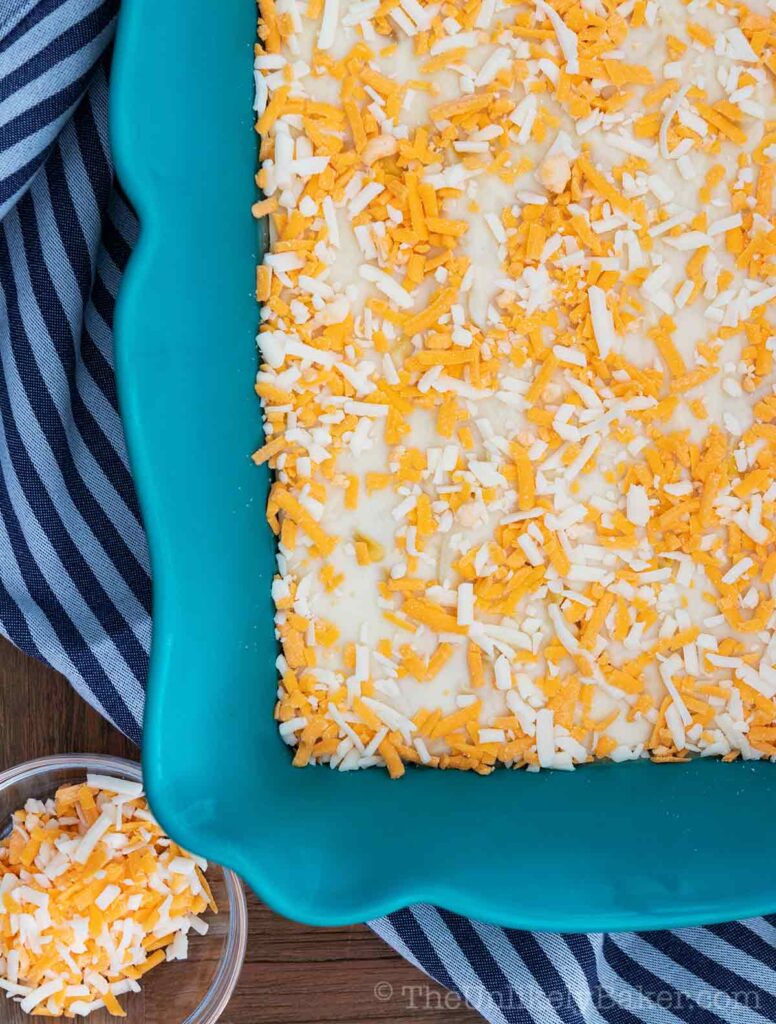
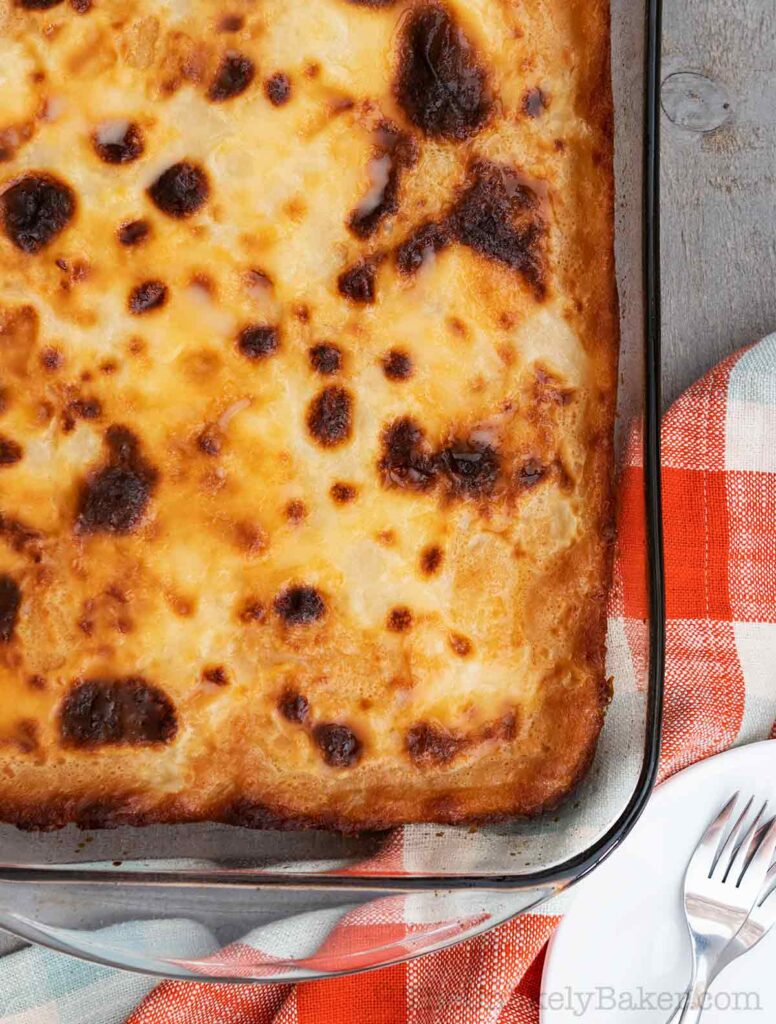
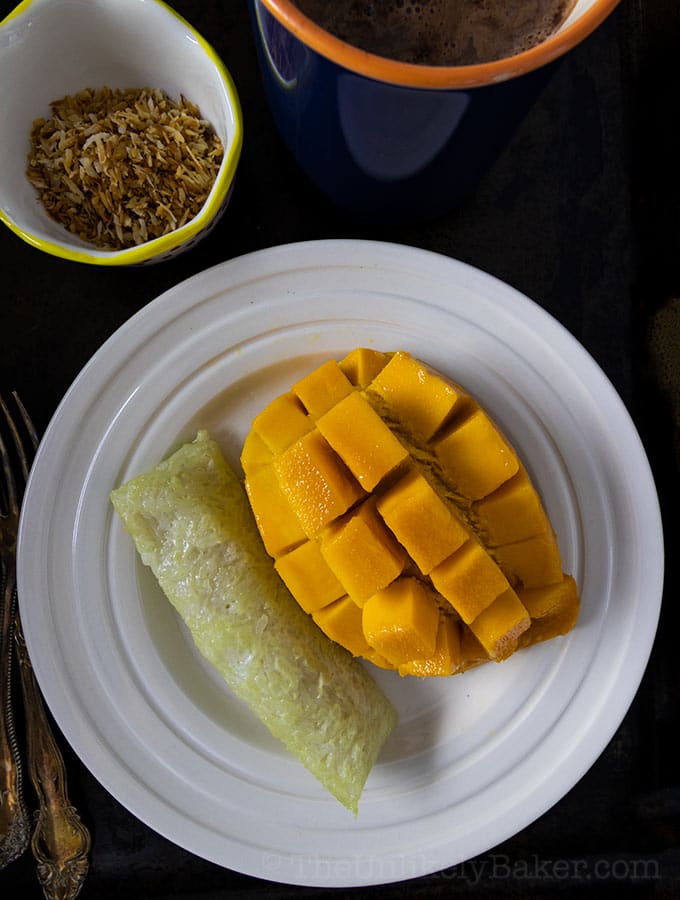
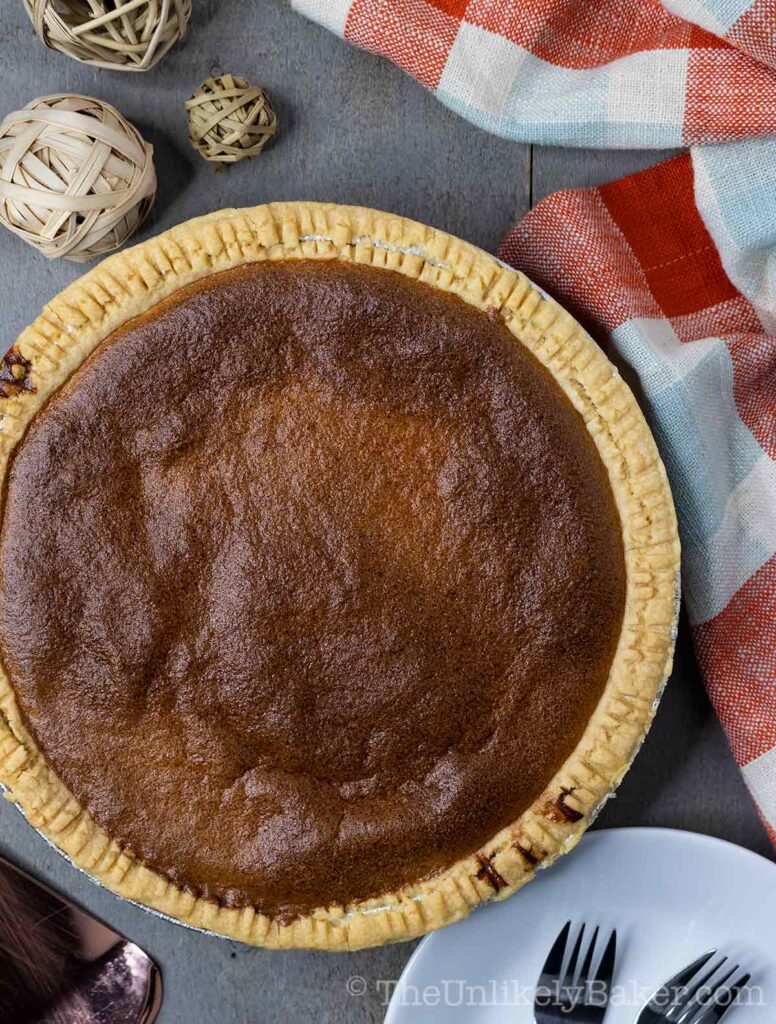
- Maja blanca is made of coconut milk and corn. Light, creamy, refreshing and so easy to make.
- Cassava cake with macapuno is a traditional Filipino dessert made of grated cassava, coconut milk, condensed milk and macapuno.
- Suman is made of glutinous rice and coconut milk, wrapped in banana leaves and steamed to sticky perfection. Eat it with mangoes in the summer or dip it in tsokolate in the winter. Delicious!
- Filipino egg pie is a rich, creamy custard baked in a buttery pie crust. A childhood favourite of many Filipinos.
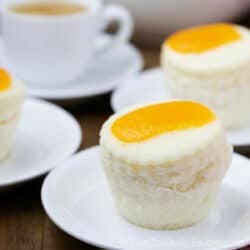
How to Make Puto Cheese and More!
Ingredients
- 4 cups rice flour
- 1 cup evaporated milk
- 1 14-oz can coconut milk
- 1 cup water
- 1½ cup granulated sugar
- 3 tbsp baking powder
- ½ tsp salt
Optional Add-Ins:
- cheddar cheese
- ube extract
- salted duck eggs
Instructions
- In a large bowl, combine 4 cups rice flour, 1 cup evaporated milk, 1 can coconut milk and 1 cup water until incorporated.

- Cover the bowl with plastic wrap and chill overnight. This is a very important step; it allows the rice flour to ferment which results to soft and fluffy puto.

- When ready, add 1½ cups sugar, 3 tbsp baking powder and ½ tsp salt to the mixture and stir to combine. Optional: strain the mixture into another bowl to get rid of lumps and to achieve the smoothest consistency.

- Pour the puto mixture into individual moulds/cups, which have been lightly greased (I use baking spray). Careful not to over-grease your moulds; too much oil will discolour the bottoms of your puto. Also ensure not to over fill the cups; about ¾ full is perfect.

- Steam on med-high heat for 10-15 minutes or until a toothpick inserted in the centre comes out clean.
- Remove the puto from the steamer and when they’re still warm but cool enough to handle, remove from moulds and enjoy!
Video
Notes
- To make cheese puto, all you need to do is place a piece of cheddar cheese on top of the semi-cooked puto. I usually place my cheese around the 10-minute mark. Then continue steaming until fully cooked.
- For putong ube, simply add ube extract to the batter just before you pour into moulds, then stir. That’s it! I usually do 1 tsp of extract for every cup of puto batter.
- And for salted duck eggs puto, just buy salted duck eggs, slice, and place on top of puto similar to puto cheese.
- See post for more tips on how to make perfect puto every time.
Nutrition
Nutritional information are estimates only.
Happy steaming!
Did you make this puto recipe? I’d love to hear from you in the comments section below.

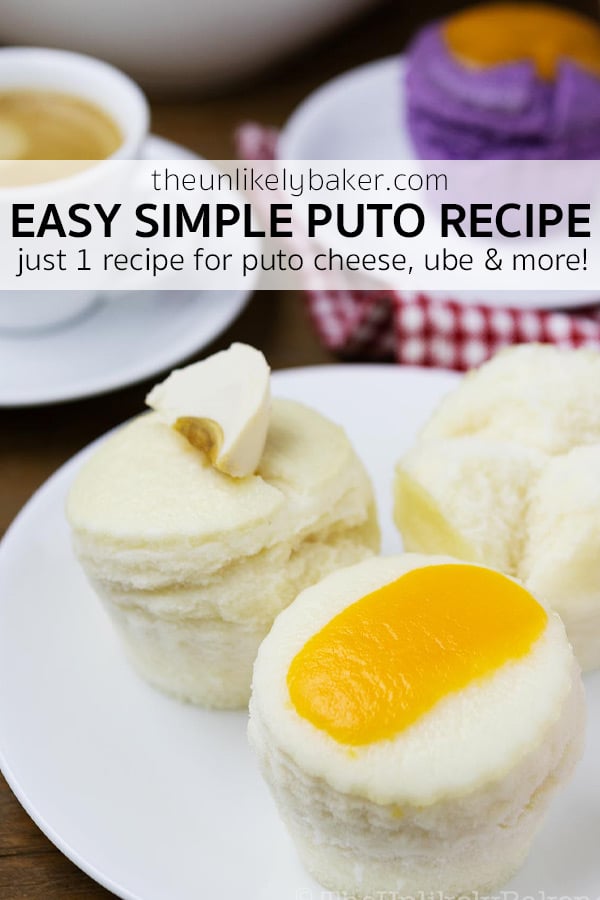
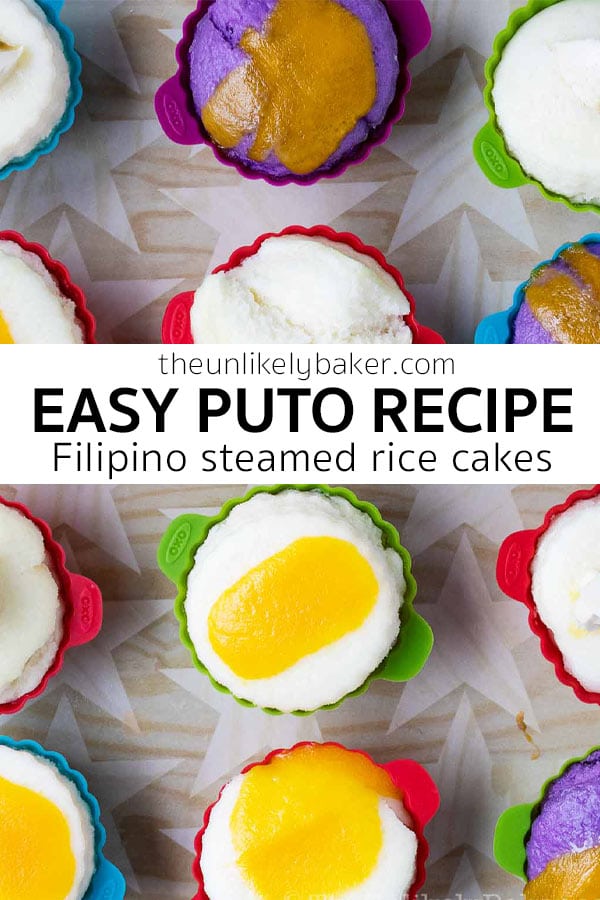
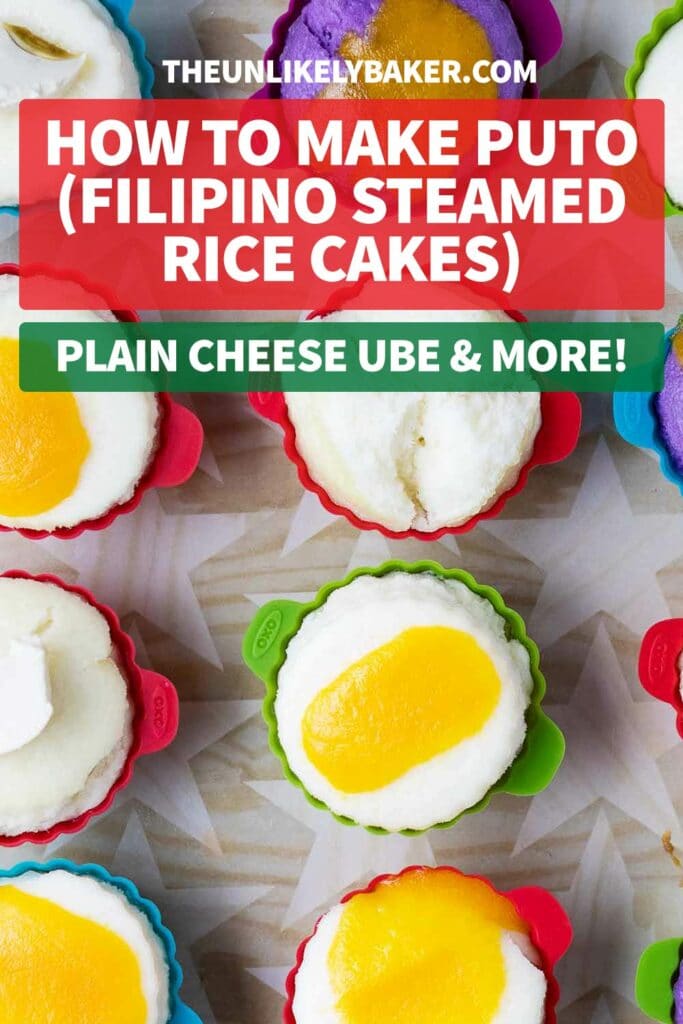
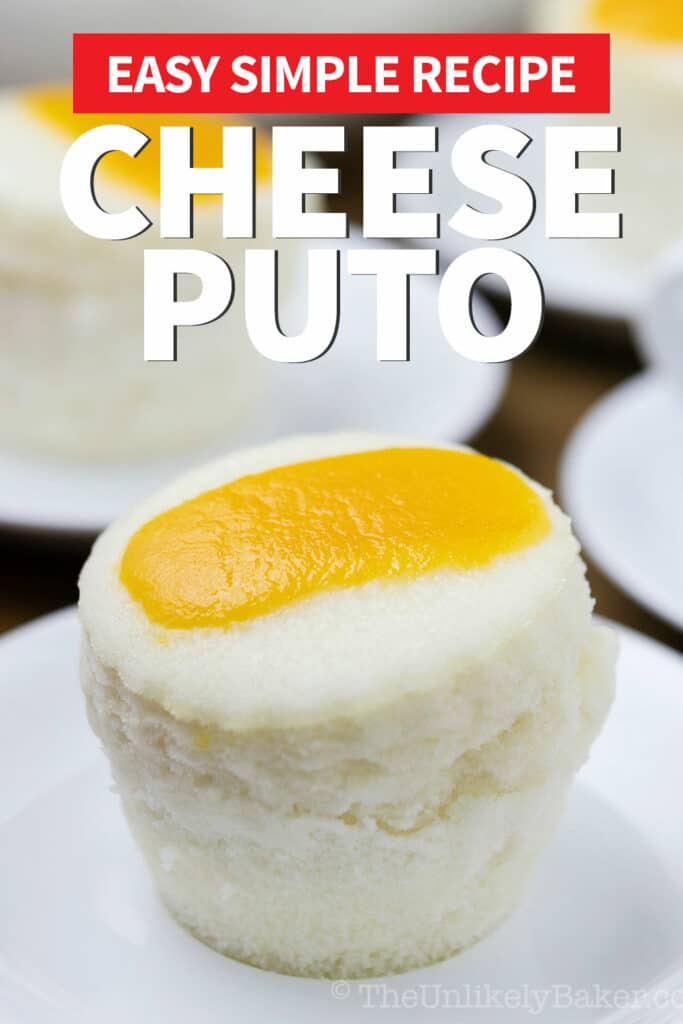
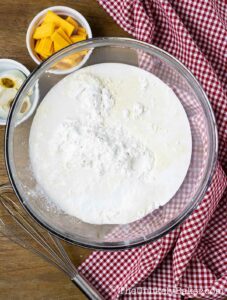
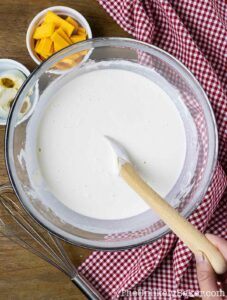
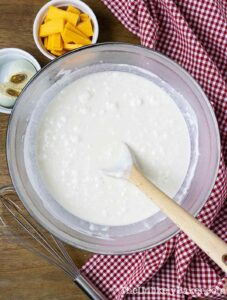
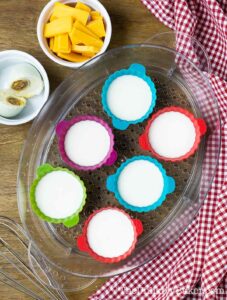
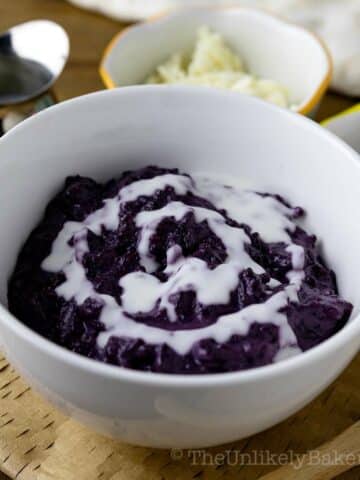
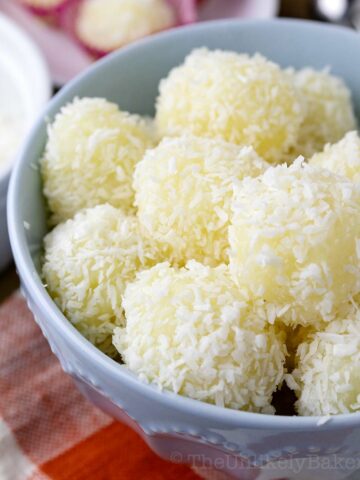
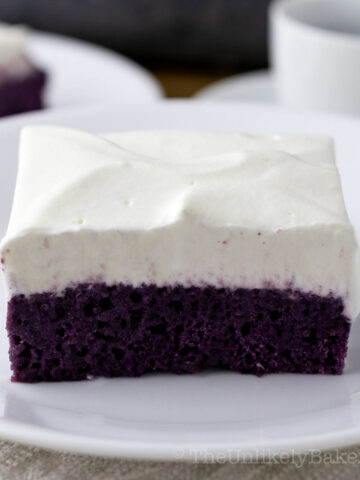
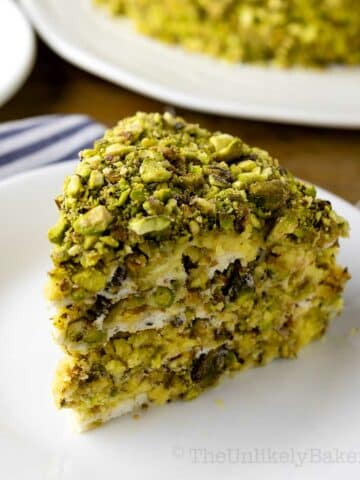
Sharon
We love puto! Especially with dinuguan lol!! We always buy I never realized they’re so easy to make. Will try your recipe. Thank you! (And I have spanish friends who think it’s funny as well lol!!)
Jolina
Ah yes, puto and dinuguan. My lola makes the best! Enjoy 🙂
Nancy
I’m Spanish, so the name made me giggle but, this looks incredibly delicious. Can’t wait to try it!
Jolina
We always get in some kind of trouble with them whenever we bring some puto LOL! Hope you get to try them Nancy 🙂
Melissa
LOL I don’t mind cheese “kumalat ng bongga” that made me laugh Jolina! Your recipe for puto looks delicious and reminds me of the Philippines.
Jolina
LOL! I don’t mind it either 🙂 They’re delicious. Hope you try them!
Nikki Wayne
It’s such a nice Filipino delicacy,so easy to make.
Danielle
Well, now my mouth is watering after this, ha! I love that you make them different colors too. They look delicious!
Bri
I’ve never heard of any of these but they all look DELICIOUS! Trying them soon!
Beth
I haven’t had Puto before, but I want to try it. Thanks for this detailed recipe, I feel like I’ll be successful when I make it.
Natalie
Oh I have never heard of puto before – so interesting! I love discovering new recipes like this one.
Heather
I think I had puto at a Filipino party once. I remember it was fluffy and topped with coconut. So delicious!
Jolina
Hi Heather, yes sometimes puto is topped with coconut. There are so many different ways to enjoy them!
NIkki
My Filipino friends will love this! I can’t make it myself lol I’ll ask them nicely to make some 🙂
Heather
I have never made or eaten puto before. I can’t wait to try it, looks delicious!
Pam Wattenbarger
My son-in-law is a huge fan of puto. He used to order it (when we used to be able to go out to eat) often. I’m sure he’d love for me to make him a batch!
Jolina
It would be a lovely surprise for sure 🙂
Amber Myers
This looks good. I admit I’ve never tried it before, but I am intrigued and am sure I will enjoy it!
Brianne
I have to try this. I’ve never heard of Puto before. It looks absolutely delicious, though. It’s so much fun to discover new recipes!
Charlie
I’ve had rice cakes before but puto seems fluffier not sure if their the same. They look delicious!